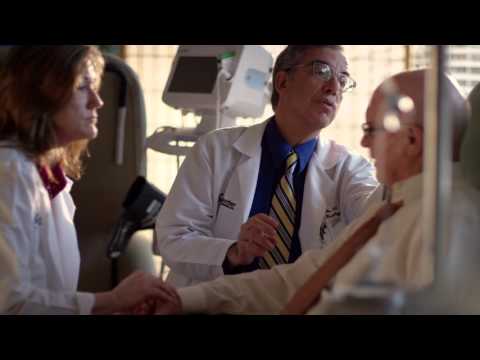Medical Assistant Responsibilities and Duties
Contents
A medical assistant is an allied health professional who supports the work of physicians and other health professionals, usually in a clinic setting. Medical assistants perform a variety of administrative and clinical tasks to keep the offices of physicians and other health practitioners running smoothly. The duties and responsibilities of Medical Assistants vary from state to state and from one medical office to another. However, there are some duties and responsibilities that are common to most medical assistant positions.
Checkout this video:
Job Description
A medical assistant is a valued member of a healthcare team. They work closely with physicians and other medical personnel to provide care for patients. The duties of a medical assistant can be divided into clinical and administrative tasks.
Clinical responsibilities include taking and recording patient vital signs, such as blood pressure, temperature, and pulse. They also collect and prepare laboratory specimens for testing and assist with patient examinations. Administrative duties include scheduling appointments, handling correspondence, maintaining medical records and billing patients.
Medical assistants must have excellent communication skills and be able to work well under pressure. They must also be detail-oriented and able to maintain confidentiality of patient information. Most medical assistants have at least a high school diploma or equivalent, although some jobs may require postsecondary education or certification.
Clinical Responsibilities
Medical assistants perform many clinical duties. They take and record patients’ medical histories, vital statistics and information such as test results in Medical records
They also prepare patients for examination and assist the physician during the exam. This may involve drawing blood, preparing urine samples for testing, removing sutures, applying bandages and other tasks.MEDICAL ASSISTANT RESPONSIBILITIES AND DUTIES
Administrative Responsibilities
The administrative medical assistant responsibilities include greeting patients, answering phones, scheduling appointments, handling patient inquiries, updating and filing patient medical records Other duties may include preparing insurance forms, handling correspondence and scheduling laboratory tests and hospital admissions.
Supervisory Responsibilities
While many medical assistants are not responsible for supervising other employees, some may be asked to take on this role in a small clinic or doctor’s office. When this is the case, supervisory duties may include training new medical assistants, scheduling and overseeing the work of other medical assistants, and handling performance issues.
Education and Training Requirements
To become a medical assistant, you will need to complete an accredited postsecondary medical assisting program. These programs typically take about one year to complete and lead to a certificate or diploma. Some community colleges offer two-year associate’s degree programs in medical assisting.
In addition to completing an accredited medical assisting program, you will also need to obtain certification from a professional organization, such as the American Association of Medical Assistants or the National Healthcare Association. Once you have completed your education and training requirements and passed your certification exam, you will be ready to begin your career as a medical assistant!
Salary and Job Outlook
The medical assistant salary and job outlook is promising. With the aging population and the advancement of medical technology, the demand for medical assistants is expected to grow. The average salary for a medical assistant is $32,000 per year. The job outlook for medical assistants is positive and is expected to grow by 29% from 2016 to 2026.
Certification and Licensure
In order to work as a medical assistant, certification is not required in all states, but some states may require certification or licensure. Many employers prefer to hire certified medical assistants, and some may require certification as a condition of employment. The Certifying Board of the American Association of Medical Assistants (AAMA) offers the Certified Medical Assistant (CMA) credential. To be eligible for the CMA exam, candidates must have completed an accredited medical assisting program and have graduated from high school or earned a GED. Candidates must also complete an AAMA-approved internship or have at least five years of work experience as a medical assistant.
Key Skills
When you are working as a medical assistant, you will need to have a strong focus on detail as well as excellent communication and customer service skills. You should also be able to work independently and handle a variety of tasks at one time. Other key skills for medical assistants include:
-Answering patient questions
-Scheduling appointments
-Taking and recording vital signs
-Drawing blood
-Preparing patients for exams
-Assisting with minor surgeries
-Administering injections
-Collecting urine and stool samples
Working Conditions
Medical assistants work in a variety of medical offices and clinics. They might work in a solo physician’s office, or in a large clinic or hospital. Their duties vary depending on the size and type of facility where they work. Many medical assistants have office duties, such as answering phones, taking messages, scheduling appointments, greeting patients and handling correspondence. They also might perform clinical duties, such as taking medical histories, recording vital signs, preparing patients for examination, explaining treatment procedures to patients and collecting and processing lab specimens. Some medical assistants specialize in one area or the other; others are trained to do both office and clinical tasks
Career Paths
Medical assistants are among the most versatile and in-demand healthcare professionals in the US. With such a wide range of responsibilities and duties, it’s no wonder that medical assistants are in high demand!
Most medical assistants begin their careers with a postsecondary certificate or diploma from an accredited medical assistant program. Some states also require medical assistants to be certified, although certification is not always required for employment.
Once you have completed your training, you will be ready to begin your career in a variety of settings, including hospitals, clinics, physician’s offices, and other healthcare facilities. No matter where you work, you will be expected to perform a variety of tasks, including:
Answering phones and scheduling appointments
Assisting with patient exams
Taking and recording vital signs
Administering injections and medications
Drawing blood and performing lab tests
Preparing patients for X-rays and other diagnostic tests
Educating patients about their health conditions
And more!







